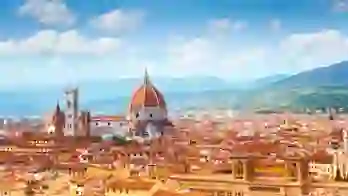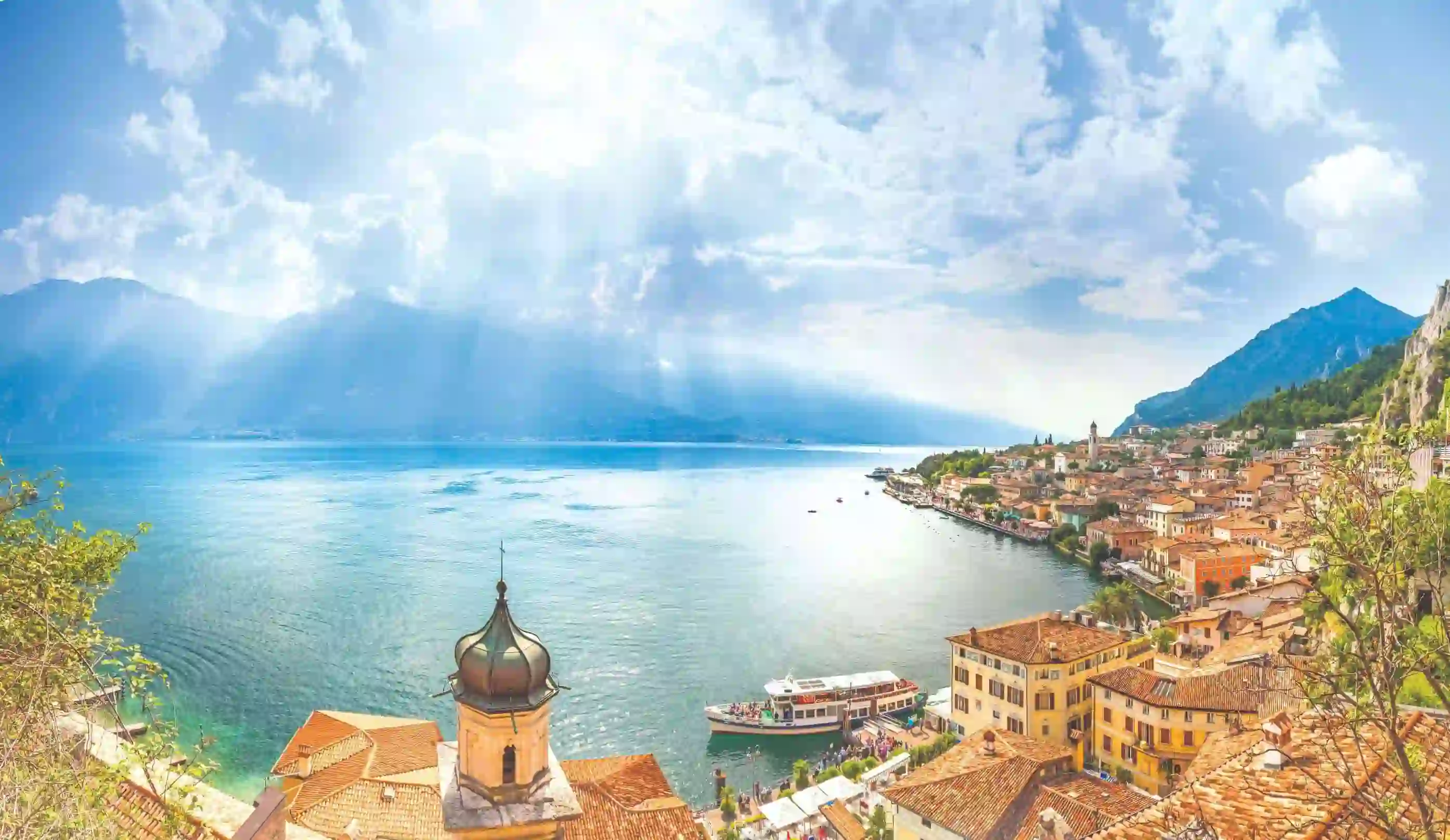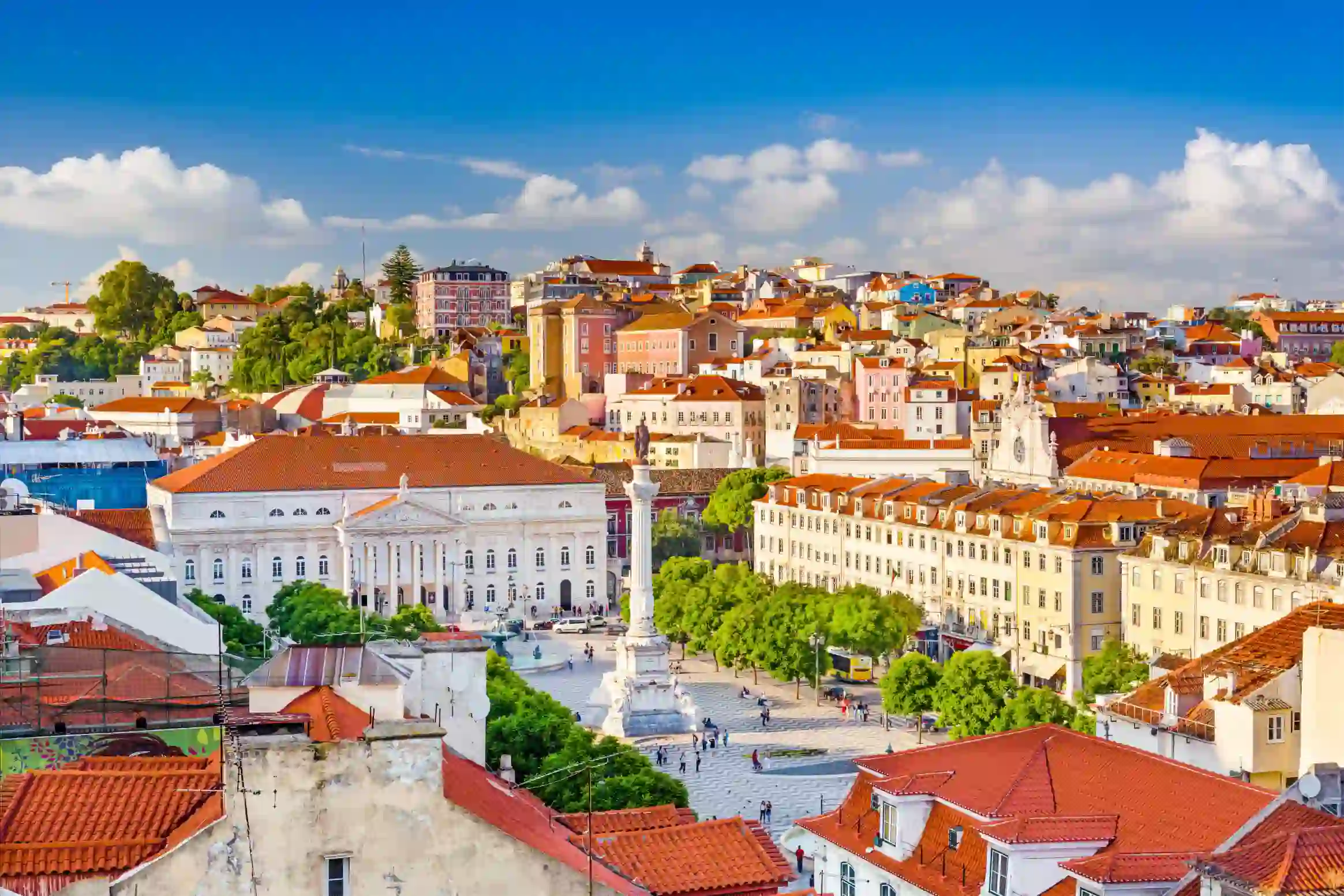
Food & Drink in Italy
Italian food and drink is legendary the world over, and with good reason. Often simple but always delicious, the country's cuisine goes far beyond pizza and pasta (although the chance to enjoy the 'real deal' here definitely shouldn't be missed). You'll find healthy soups and stews, hearty meat and fish dishes, and enough desserts and pastries to delight even the sweetest tooth. From carbonara and risotto a la Milanese to tiramisu and panna cotta, a meal in Italy is almost a spiritual affair.
Each region in Italy produces and protects its share of the world’s favourite dishes and some of its most revered produce, which means that a trip through the country is a culinary event unlike any other. While there are staples ubiquitous throughout the country - you'll have plenty of opportunities to eat your weight in gelato, for example - favoured ingredients and cooking styles vary from location to location. Be it the dairy-rich dishes of the north or the typically Mediterranean temptations of the south of Italy, you're guaranteed to eat well.
Wherever you go, you'll have the chance to get your caffeine fix with the local coffee. There are a variety of options to choose from, including the caffè macchiato - an espresso with a dash of milk, and the caffè lungo - a shot of espresso with more water (and therefore a milder flavour) than a regular espresso.
Ready to embark on a food tour of this beautiful country and discover some facts about Italian foods? Here's our guide to regional food in Italy, and the signature dishes to try in the country's best-loved destinations.
Regions
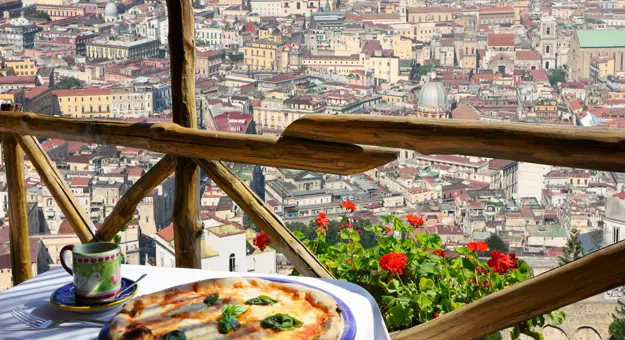
Campania
Home to tourism hotspots such as Pompeii, Naples and the Amalfi Coast, Italy's Campania region offers a somewhat diverse food scene. Inland, there is plenty of verdant countryside to take advantage of, making meats like prosciutto, salami and pancetta staples in the region's cooking. Along the coast, it's fish and seafood that reign supreme, with fishing still a popular occupation throughout the Amalfi Coast. Look out for dishes such as spaghetti alle vongole (spaghetti with clams) and moscardini con le patate (octopus and potatoes cooking in wine). This area is also famous for one of the best-loved Italian alcoholic drinks - limoncello, a sweet lemon liqueur often enjoyed after dinner.
In Naples, the aromas from street food stalls selling cuoppo are always enticing. Comprising a mix of deep-fried foods such as squid, fish, and vegetables and eaten from a paper cone, it's the perfect dish to eat on-the-go while strolling through the city's narrow streets. If you're after a traditional (and mouthwatering) breakfast, be sure to order a coffee and a sfogliatella - a shell-shaped pastry with a sweet ricotta filling. Of course, the dish that is most associated with Naples is Italy's most famous food export - the pizza. In fact, the first pizza margherita was made here over a century ago, and still remains the most popular type of Neapolitan pizza. Made using local ingredients including buffalo mozzarella (also the star of the Caprese salad), fresh tomatoes and basil, it is said to have originated from the humble flatbreads eaten in Naples in the 18th century.
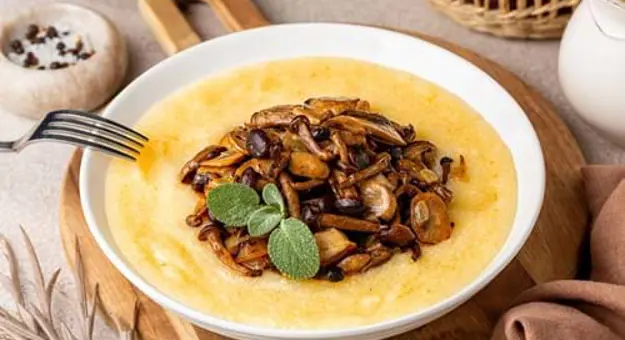
Veneto
Italy's eighth largest region is home to Venice and Verona, and also provides access to the majestic Lake Garda, making it one of Europe’s most visited destinations. The culinary scene here is wonderfully diverse, with the region's rich produce resources - meat, fish, cheese, rice, vegetables - ensuring all foodie bases are covered. The region is also the birthplace of what is undoubtedly one of the most popular Italian drinks - Prosecco.
When it comes to specific dishes, it would be scandalous not to mention the region's favourite - polenta. Made from boiled cornmeal, this vibrant yellow dish has a porridge-like consistency and is enjoyed on its own or as a side dish with meat or stews and the like. Other must-tries are risi e bisi (rice and peas) - a risotto once served exclusively in the palaces of the Venetian Republic - and baccalà alla Vicentina (codfish Vicenza style) - a stockfish (dried cod) stew made with milk, olive oil, cheese and onion. Veneto is also the home of that sumptuous coffee-flavoured dessert, Tiramisu - what better reason to savour a serving while you're here?
While in Lake Garda, try yota – a stew made with beans, ham and garlic – or "pike and polenta". Pike is one of the species fished straight from the lake and is delicious served traditionally with a Gardesana sauce and creamy polenta. In Venice, meanwhile, the much coveted soft shell crabs are fished from the lagoon in spring and autumn. Also in the City of Bridges you'll find cicchetti - small dishes akin to Spanish tapas, which you'll find in the local bàcari - small, traditional taverns that serve as the perfect venue to rub shoulders with the locals while sipping on much-loved Italian drinks.
Discover Veneto's food scene
- Journey through the dramatic Dolomites
- Enjoy a full-day visit to incomparable Venice, La Serenissima
- Explore Verona, Romeo and Juliet’s exquisite city
- Flights included
8 days from £1,105 pp
was £1,299 pp
Dates Available
April 2026 - October 2026
Duration
8 days
Depart From
12 airports
Excursions & Visits
4 included
Meals
7 included
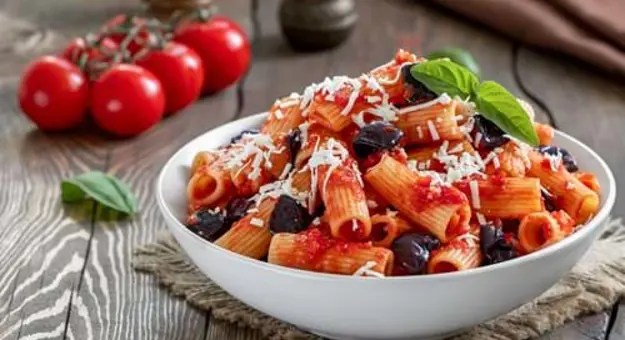
Sicily
In southern Italy, it is typically fresh, seasonal ingredients that form the basis of the local diet, and dishes in Sicily tend to follow this rule, remaining true to its long agricultural heritage. The island's climate provides it with an abundance of superb produce, ranging from lemons and grapes to olives and nuts, not to mention the wonderfully fresh seafood from its coast. The result? One of the healthiest cuisines in Europe, with fish, vegetables, olive oil and fruit all playing leading roles in everyday meals. Fear not, though - the food here is just as tantalising as its northern counterparts, and the flavours are often uniquely Sicilian thanks to many centuries of foreign occupation - influences from the Greeks, Spanish, Arabs and Normans have shaped the island's cuisine.
When it comes to local dishes, you can't go far wrong with pasta alla norma, made with aubergine, tomato, ricotta and basil. Another Sicilian classic is arancini. These balls of rice are usually made from a white wine risotto, breaded and deep fried - a truly indulgent dish. The island also lays claim to the parmigiana di melanzane (aubergine parmigiana), although that's a claim disputed by the city of Naples.
When it comes to Sicily's ultimate signature dish, however, it has to be the cannoli. These tubes of crispy fried pastry are filled with sweet ricotta cheese, and are said to have originated in Palermo in the 9th century, when the island was under Arab rule. Whatever their origins, they have to be one of the tastiest traditional foods in Italy today!
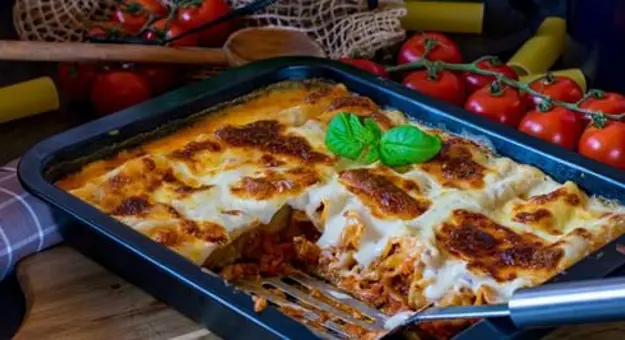
Emilia-Romagna
Located in northern Italy, the Emilia-Romagna region is popular with tourists looking to explore its pretty mediaeval towns, scenic forests and charming beaches. For foodies, however, it is the area's cuisine that really puts it on the map. Often hailed as one of the best places in Italy for food, the region has no less than 44 protected traditional food products. In addition to famous exports like Parmigiano Reggiano cheese, parma ham, balsamic vinegar and tortellini, the region's location next to the Adriatic coast means you'll find a wide array of fish and seafood here - everything from clams and eels to sardines and mackerel.
Going inland, it's meat that is the star of the menu, in particular, pork. Showcasing strong ties to agricultural traditions, Emilia-Romagna's rural cuisine includes things like bone broths, meaty breads and stuffed pasta. You'll also find familiar dishes like lasagne and tagliatelle here, although the most famous is undoubtedly ragù alla Bolognese. Unlike our exported version, spaghetti bolognese, ragù alla Bolognese is never served with spaghetti here, but rather wider pasta types such as tagliatelle.
If you're visiting the city of Ravenna, famous for its mosaic-covered historic buildings, be sure to partake in Italian coffee culture with the addition of a Ravennino - a rich chocolate praline made with toasted pine nuts. While the region is known as Italy’s Food Valley, Emilia-Romagna also provides a superb array of traditional Italian alcoholic drinks, including Lambrusco and Sangiovese.
Explore Emilia-Romagna
- Journey through the dramatic Dolomites
- Enjoy a full-day visit to incomparable Venice, La Serenissima
- Explore Verona, Romeo and Juliet’s exquisite city
- Flights included
8 days from £1,105 pp
was £1,299 pp
Dates Available
April 2026 - October 2026
Duration
8 days
Depart From
12 airports
Excursions & Visits
4 included
Meals
7 included
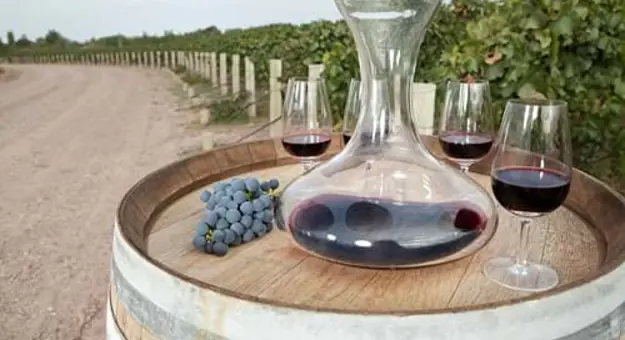
Tuscany
Traditionally an agricultural region, Tuscany's cuisine is still largely inspired by 'peasant food' - simple ingredients usually centred on meat and vegetables, cooked with love and reverence to become filling, flavourful dishes, always accompanied by slices of crusty white bread - here the unsalted loaf is king. As a result, the region has to be one of the best places in Italy for food that is rustic, hearty and delicious - the ultimate comfort food. Typical dishes of this region include ribollita - a soup made with beans, vegetables, cheese and bread - panzanella - a summer salad with the addition of stale bread - and wild boar stew. Tuscany is also renowned for its wine - some of the best in Europe - particularly its red wines made from the Sangiovese grape.
You'll have no problem finding these authentic Tuscan dishes whichever corner of the region you visit, but, as the capital city (and the birthplace of gelato), Florence provides ample opportunity to sample the best of food and drink in Italy. For a special evening of dining, book a table at Buca Lapi, a traditional restaurant that opened its doors more than 130 years ago in the cellar of the Palazzo Antinori. Florence is also home of the bistecca alla fiorentina (Fiorentine steak), often considered to be the region's official dish. This thick steak, which comes from the Chianina cow breed, is usually served rare with spinach and beans.
In Arezzo, look out for traditional dishes like appardelle all'aretina - pasta with a duck ragù - and pappa al pomodoro - a thick tomato and bread soup. If you're visiting Pisa, be sure to finish your meal with a slice of torta co' bischeri - a rich chocolate tart that dates back to the 16th century. Wherever you go, you'll find the tempting boards slathered with cuts of cured meats and sausages, usually eaten as an appetiser.
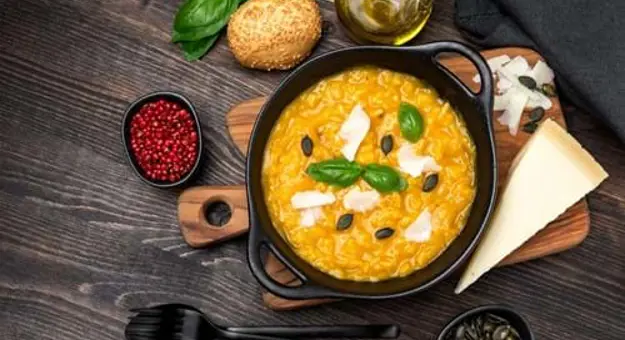
Lombardy
Traditionally one of the wealthier regions of Italy, Lombardy's cuisine is typically luxurious and rich - think prime meat cuts, lavish spices and fancy cheeses. Located in the country's north, it is also chillier than its southern counterparts, resulting in a rather more alpine version of Italian food. While you won't find the cruxes of Mediterranean cooking here, what you will find is hearty, warming dishes with meat, cheese and butter aplenty. The region also has another somewhat less known star export - soda water. The famous San Pellegrino brand is based in Bergamo, and there are a number of other sparkling water producers across the region.
Thanks to the region's history of rice cultivation, rice dishes feature heavily on Lombardy's menus, as does polenta and, in the north of the region, buckwheat. Butter and luxurious aged cheeses are used to enhance these dishes. Freshwater fish are provided by Lake Garda and Lake Como, with perch, pike, tench and eels dried, grilled or used for risotto or pasta dishes. If it's fine dining you're after, Lombardy won't disappoint - the region has more than 60 Michelin starred venues to choose from.
In chic Milan, the risotto alla Milanese is known for its bright yellow colour (thanks to the addition of saffron) and is a must-eat in the city. It is also said that panettone - a sweet bread dotted with dried fruit and an essential for Christmas in Italy, has its origins here. If you're visiting Lombardy in autumn or winter, be sure to look out for the popular tortelli di zucca - a stuffed pasta made with pumpkin that was first conceived in the city of Mantua and is savoured around the festive season.
Grab a taste of Tuscany
- Visit Portofino, one of the Mediterranean's most exclusive corners
- Spend a day in breath-taking Florence
- Discover the wonderful cities of Pisa and Lucca
- Flights included
8 days from £1,076 pp
was £1,265 pp
Dates Available
April 2026 - October 2027
Duration
8 days
Depart From
10 airports
Excursions & Visits
6 included
Meals
14 included
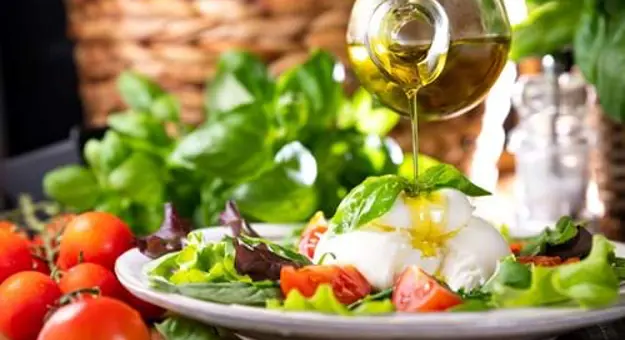
Puglia
With an abundance of flat, agricultural land and a warm climate, it's no surprise that Puglia is home to some of Italy's best produce. The region provides the majority of the country's olive oil - an important staple in all Italian food - as well as plenty of tomatoes, grapes, mushrooms and peppers. There is also an abundance of delicious bread varieties here, and residents tend to favour focaccia over pizza. Cheese lovers will also have reason to celebrate - the region produces some of the country's best ricotta and burrata.
A large section of the region lies next to the ocean, providing plenty of fish and seafood, including sea bass, mullet, sardines and mussels, best enjoyed fresh from the sea in charming cities and towns such as Polignano a Mare, famous for its magical (and incredibly photogenic) cave restaurant, Grotta Palazzese. Indeed, the region has something of a monopoly on this unique dining experience - visitors to the whitewashed town of Ostuni can also enjoy their meal in an ancient cave at Osteria del tempo perso.
One of the region's most loved foods for you to try on your holiday in Italy is orecchiette. This ear-shaped pasta is said to date all the way back to the 8th century, and is usually served with broccoli, cheese, or meatballs. If you're wondering how to order a coffee in Italy's sunny Puglia region, you can opt for a cooling caffé leccese - a more refreshing version of Italy's favourite beverage, made with coffee, almond milk and ice that hails from the historic city of Lecce.
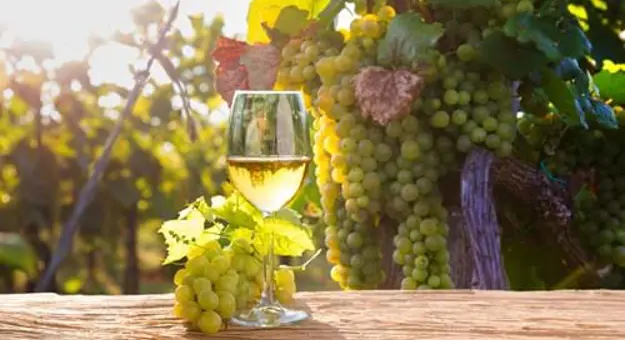
Umbria
Located in central Italy, Umbria is a haven for those seeking a rural escape, as well as the chance to sample authentic Italian food and drink. Being one of the few landlocked regions in the country, it's not surprising that Umbria - often referred to as Italy's 'green heart' - has a cuisine focused on meat, grains and vegetables. Like its Tuscan neighbour, the food here is hearty - plenty of stews, soups, cured meats and cheeses to fuel your sightseeing. It's also home to the renowned Umbrian black truffle - typically grated over pasta and risotto - and visitors to the region can enjoy the unique experience of setting off on a truffle hunting mission with many of the local families that have been doing so for generations.
Pork is big on the region's menus, with the town of Norcia particularly renowned for its meat and skilled butchers - a reputation it has held since Roman times. Those visiting the region's capital, the pretty hilltop city of Perugia, shouldn't pass up the opportunity to take advantage of its status as a city of chocolate. The small city of Orvieto is known for its excellent wines, providing some of the best-loved alcoholic drinks in Italy - predominantly white wines.
Umbrian dishes are typically inspired by centuries-old traditions, and have their roots in 'peasant food'. You'll find things like slow-roasted pigeon, pasta with sausages and cream, and bean and pancetta stew on menus. The region's shining star, however, is porchetta. This delicacy consists of slow-roasted pork served in a sandwich, often with chopped intestines, garlic and lard.
As we've seen, the food in Italy is wonderfully diverse and varies greatly from region to region. However, one thing is certain - wherever you visit on your Italian holiday, you can enjoy delicious dishes with many years of history. From soups and stews to steaks and fish, your meals here are likely to be just as memorable as the scenery - all washed down with some of the finest drinks in Europe. Don’t forget to round off your meal with an ice-cream from one of the many gelatarie – we recommend stracciatella – milk-based ice-cream with fine, irregular shavings of chocolate.
Discover our blog
Inside our itineraries: Talking wish-list Italian escapes with a customer
Find out how one of our customer’s childhood dreams came true on their recent visit to the enchanting Italian Lakes with the latest addition to our Q&A series.
A bite of the Great White North: A foodies’ guide to Canada
Discover the culinary delights of Canada with our one-stop guide to the must-try foods you’ll encounter across each region.
From port to pastéis: A foodies’ guide to Portugal
Sink your teeth into Portugal’s finest culinary delights as you explore this enchanting Iberian destination bite by bite.

